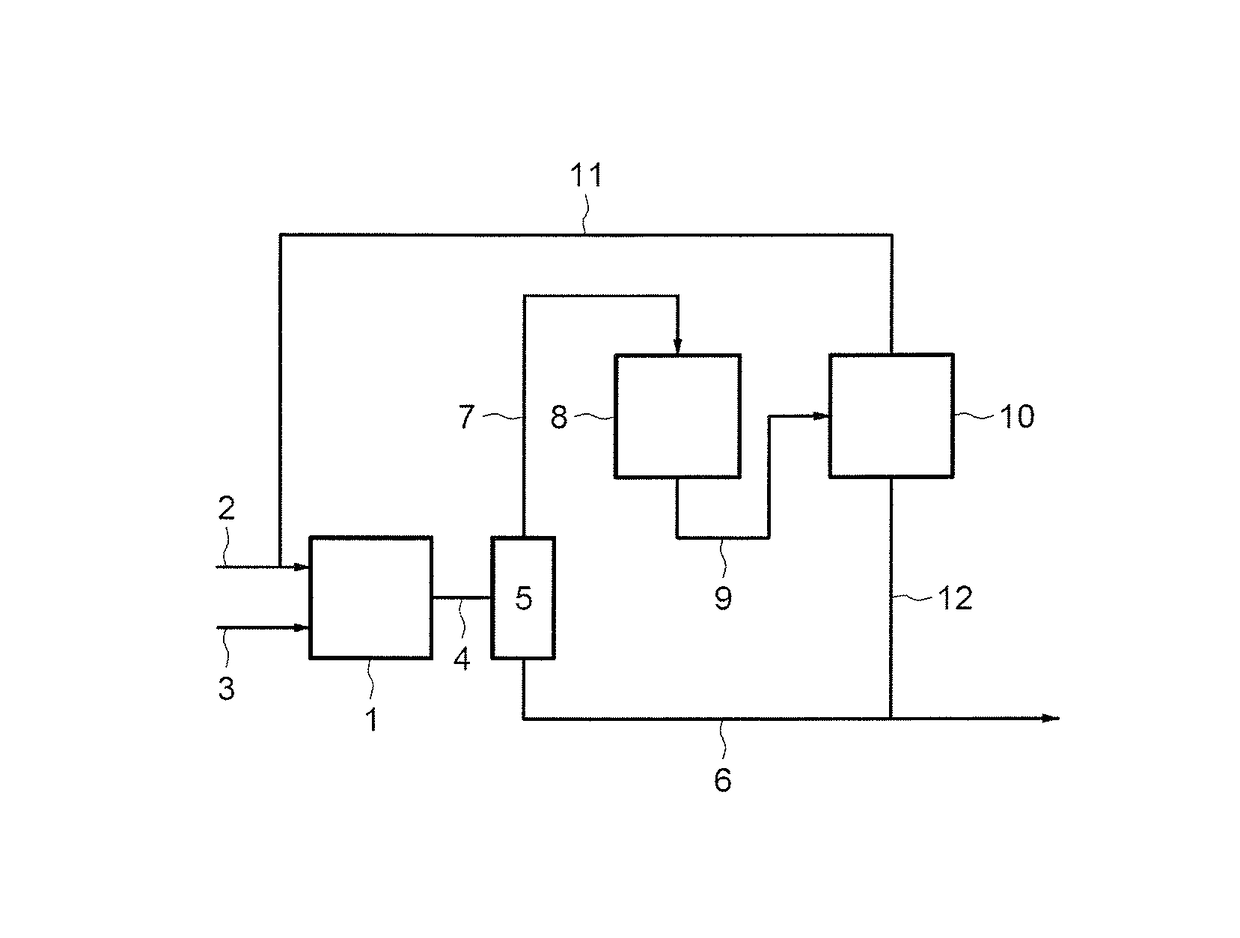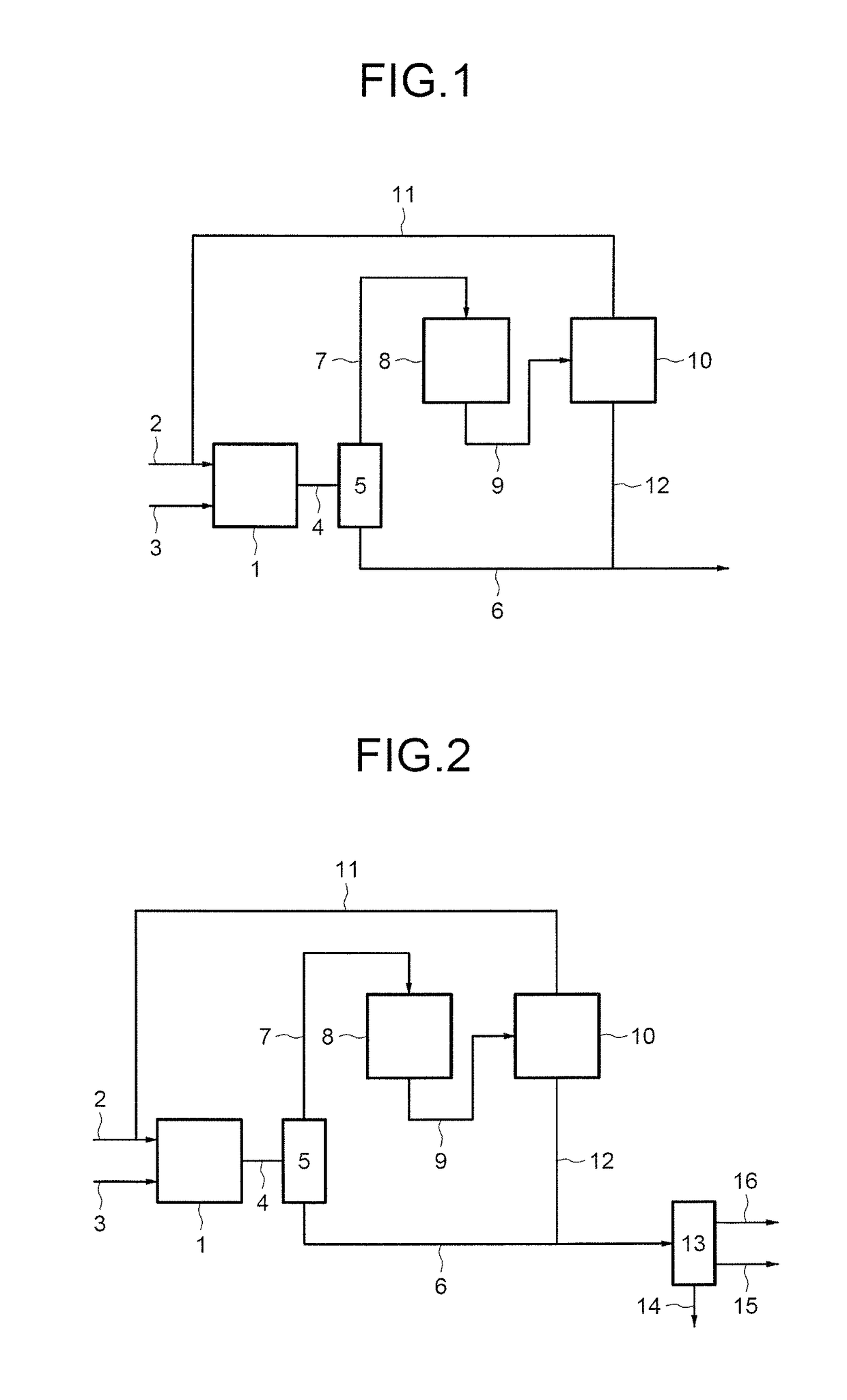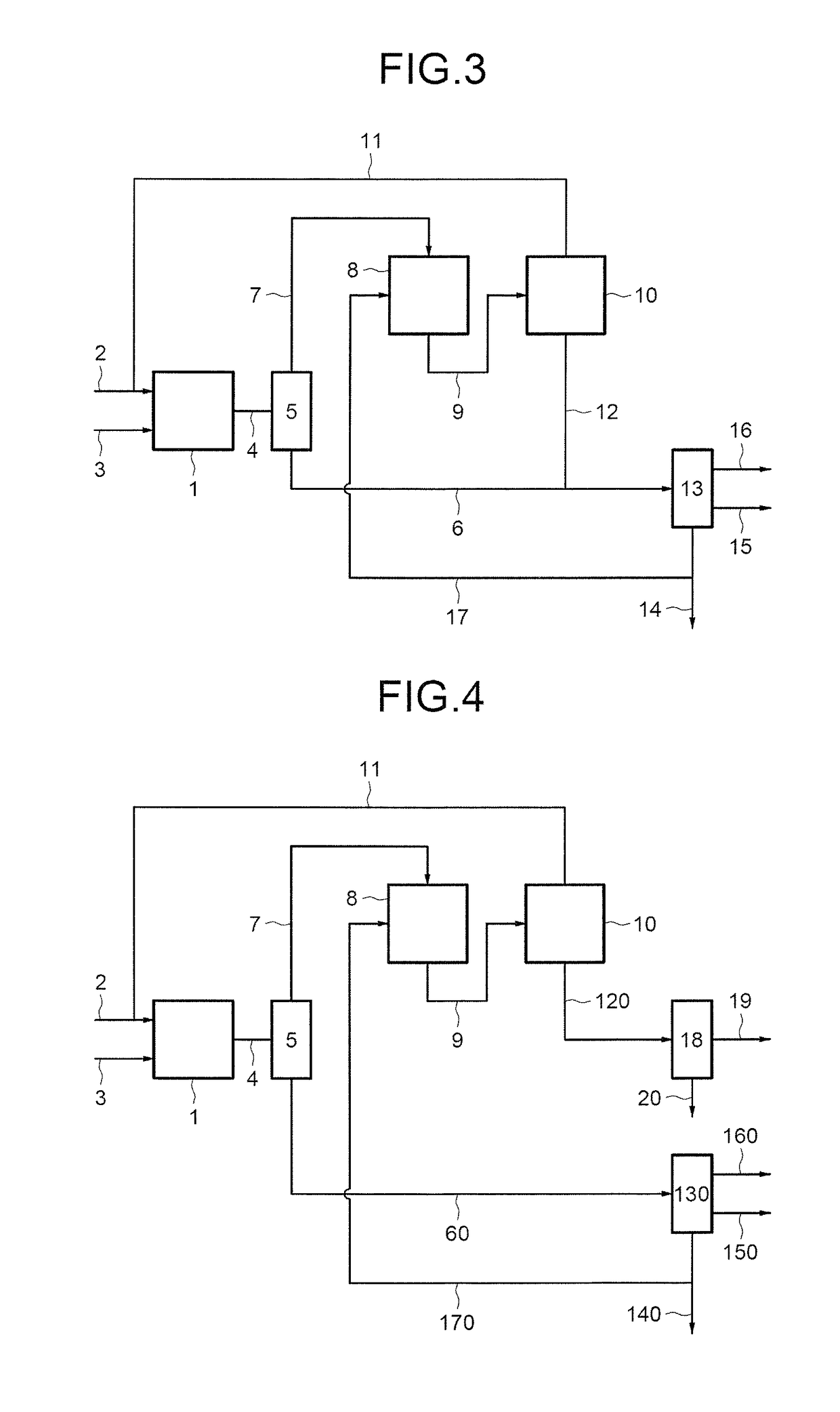Method for synthesising a mercaptan by adding hydrogen sulfide to an olefin
- Summary
- Abstract
- Description
- Claims
- Application Information
AI Technical Summary
Benefits of technology
Problems solved by technology
Method used
Image
Examples
example 1
Process According to the Invention
[0175]The step of addition of hydrogen sulphide to a butene-1 is carried out in the following conditions:[0176]1—First fixed-bed catalytic reactor charged with 200 cm3 of catalyst (19% Cr2O3 / Alumina):
[0177]Butene-1: 75 g / h
[0178]H2S: 92 NL / h, corresponding to a molar ratio H2S / butene=2
[0179]Average temperature of the catalyst bed=245° C.
[0180]P=1.4 MPa
[0181]LHSV=60 h−1 [0182]The results obtained for this addition step are as follows:
[0183]Conversion: 83%
[0184]Selectivities: 81 / 14 / 5 (SBM / NBM / thioethers)[0185]The unconverted butenes then have the following molar composition:[0186]10% butene-1 / 45% butene-2 cis / 45% butene-2 trans[0187]The fraction of unconverted butenes goes into the finishing reactor according to the following conditions:[0188]2—Fixed-bed finishing reactor charged with 100 cm3 of sulphonic resin A36 dry (DOW)
[0189]Butenes: 7.3 NL / h
[0190]H2S: 120 NL / h
[0191]LHSV=120 h−1
[0192]No solvent.[0193]The results obtained for this finishing step a...
example 2
Comparative Process
[0201]The first step of the process is identical to that of example 1.[0202]1—Fixed-bed catalytic reactor charged with 200 cm3 of catalyst (19% Cr2O3 / Alumina):
[0203]Butene-1: 75 g / h
[0204]H2S: 92 NL / h corresponding to a molar ratio H2S / butene=2
[0205]Average temperature of the catalyst bed=245° C.
[0206]P=1.4 MPa
[0207]LHSV=60 h−1 [0208]Performance:
[0209]Conversion: 83%
[0210]Selectivities: 81 / 14 / 5 (SBM / NBM / thioethers)[0211]The unconverted butenes then have the following molar composition:[0212]10% butene-1 / 45% butene-2 cis / 45% butene-2 trans[0213]The fraction of unconverted butenes is recycled to the catalytic reactor according to the following conditions:[0214]Supply of butenes: 75 g / h with 20% butenes-2 in butene-1
[0215]H2S: 92 NL / h corresponding to a molar ratio H2S / butene=2
[0216]Average temperature of the catalyst bed=245° C.
[0217]P=1.4 MPa
[0218]LHSV=80 h−1
[0219]These steps of addition and recycling lead to a conversion of 60% and a selectivity of 82 / 12 / 6 (SBM / NB...
PUM
| Property | Measurement | Unit |
|---|---|---|
| Acidity | aaaaa | aaaaa |
Abstract
Description
Claims
Application Information
 Login to View More
Login to View More - R&D
- Intellectual Property
- Life Sciences
- Materials
- Tech Scout
- Unparalleled Data Quality
- Higher Quality Content
- 60% Fewer Hallucinations
Browse by: Latest US Patents, China's latest patents, Technical Efficacy Thesaurus, Application Domain, Technology Topic, Popular Technical Reports.
© 2025 PatSnap. All rights reserved.Legal|Privacy policy|Modern Slavery Act Transparency Statement|Sitemap|About US| Contact US: help@patsnap.com



